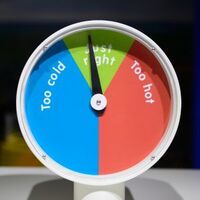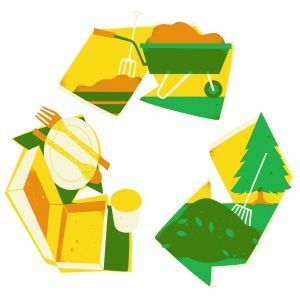Why PLA Can’t Be Recycled with Regular Plastic: Understanding the Differences
| > Home > About Insinc > Blog > Why PLA Can’t Be Recycled with Regular Plastic: Understanding the Differences |
|
In an effort to be more sustainable, many businesses and consumers have turned to bioplastics like PLA (Polylactic Acid) as an alternative to traditional petroleum-based plastics. PLA is often touted as a greener option because it’s made from renewable resources like corn starch or sugarcane. However, there is a common misconception that PLA can be recycled alongside regular plastics in the traditional recycling system. Unfortunately, this isn’t the case, and PLA needs to be discarded into landfill or sent to a commercial composting facilities.
Different Chemical Composition
The primary reason PLA cannot be recycled with regular plastics is due to its different chemical composition. Traditional plastics, such as PET (Polyethylene Terephthalate), HDPE (High-Density Polyethylene), and PP (Polypropylene), are petroleum-based and have a distinct polymer structure that is incompatible with PLA. Recycling facilities are designed to process these specific polymers, and when PLA is mixed in, it can contaminate the recycling stream. This contamination can lead to the entire batch being rejected, which is of course counterproductive to recycling efforts.
Different Processing Temperatures
The recycling process involves melting down plastics so they can be reshaped into new products. However, PLA and traditional plastics melt at different temperatures. PLA has a lower melting point, while PET and other common plastics require higher temperatures. If PLA is mixed with regular plastics during recycling, it can cause clogs and machinery issues, potentially leading to costly repairs and downtime at recycling facilities.
Composting vs. Recycling
One of the key benefits of PLA is that it is compostable under industrial conditions. This means that, in the right environment, PLA can break down into natural elements like water, carbon dioxide, and biomass, leaving no toxic residue. However, this composting process requires specific conditions—high temperatures, certain humidity levels, and the presence of microorganisms—that are not present in a standard home compost bin or regular landfill.
Composting is not the same as recycling. Composting PLA creates garden compost, not new plastic products. This distinction is important because it highlights that PLA is designed more for biodegradability rather than being reprocessed into new items like traditional plastics.
Consumer Confusion
PLA products often look and feel like traditional plastics, leading people to mistakenly believe they can be recycled in the same way. This confusion can lead to improper disposal, where PLA is either incorrectly placed in recycling bins or not composted when it could be.
A quick way to check is to look at the recycling symbol. If the recycling code is # 7 then it is likely to be PLA and can't be recycled. Regular plastic codes 1, 2 or 5 are commonly recycled in New Zealand.
The Importance of Proper Disposal
While PLA is a great material in the movement towards sustainability, it is not a one-size-fits-all solution. Its inability to be recycled with traditional plastics means that proper disposal methods are crucial. Consumers and businesses need to be aware of the differences between PLA and conventional plastics to prevent recycling contamination and to take full advantage of PLA’s compostable properties.
Unfortunately there are very few commercial compost facilites in New Zealand, so unless you have a facility near you that can process PLA it is likely you will need to send your PLA products to landfill.
https://www.insinc.co.nz/biodegradable-disposable-cold-cups.html
Posted: Thursday 1 August 2024




